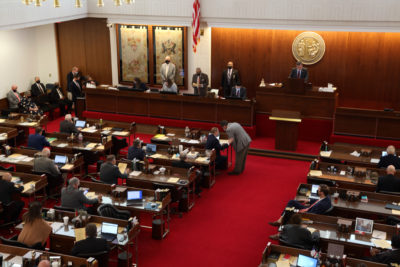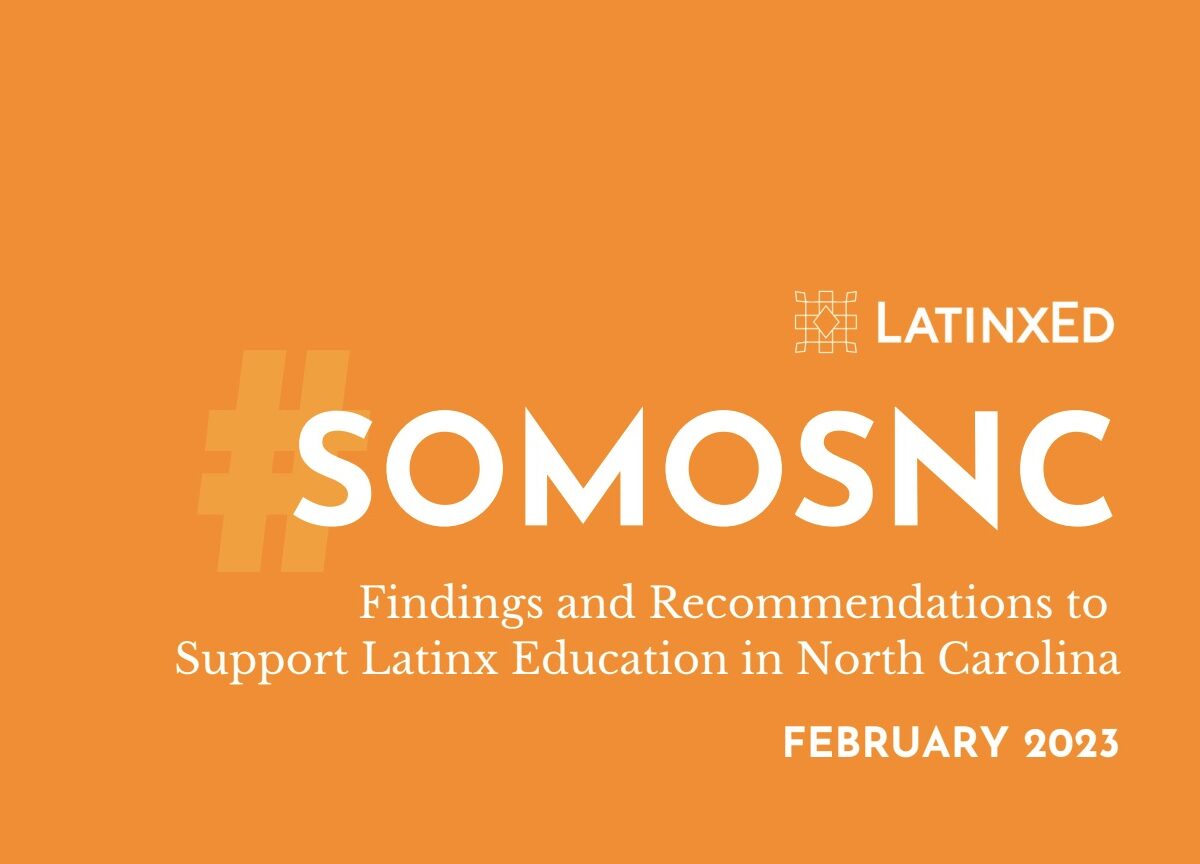

|
|
LatinxEd just finished their year-and-a-half-long statewide listening tour, #SomosNC. The organization held 250 conversations with students, parents, educators, and community leaders in 36 counties.
The tour concluded with a report released Tuesday.
“This report is not only a call to action, but a celebration,” Zamantha Granados, partnerships manager at LatinxEd, said at a virtual conference for the report. The report centers Latinx narratives and identified ways to help them navigate the education system.


There are over one million Latinx residents in N.C., according to the U.S. Census Bureau.
The report identifies several challenges these students and their families face, in addition to some community-based solutions.
Chronic underinvestment in bicultural and bilingual workforce in education
Students, educators, and caregivers told LatinxEd their school systems have gaps in resources for Latinx students. They said this is evident in funding and support for English Learner/Multilingual Learner programming, as well as how parents and families are engaged.
Caregivers specifically told LatinxEd they could not communicate with schools due to a lack of interpreters, translators and bilingual school support staff, multilingual signage and digital communication, and Spanish-speaking front desk staff or voicemail.
The report highlighted Newcomers Schools like the Sylvia Mendez Newcomers School, as well as the Burke County Schools Educator Program as programs that are investing in Latinx students.
Cultural isolation and mental health challenges facing Latinx families
LatinxEd found students and families experience cultural and social isolation, which contributes to mistrust within the Latinx community of the education system. This mistrust is exacerbated by a history of exclusion from public institutions. Families said they feel uncomfortable approaching teachers and school leaders, while school leaders told LatinxEd they had trouble engaging parents.
This isolation, which was exacerbated by the pandemic, can harm students’ mental and social-emotional health. Participants in LatinxEd’s #SomosNC tour said they would like to see North Carolina schools implement a culturally responsive curriculum as well as prepare educators with cultural competency training.
They also said educators should be offered professional development opportunities, and peer mentorship programs between community colleges, universities, and school districts should be established to empower Latinx youth.
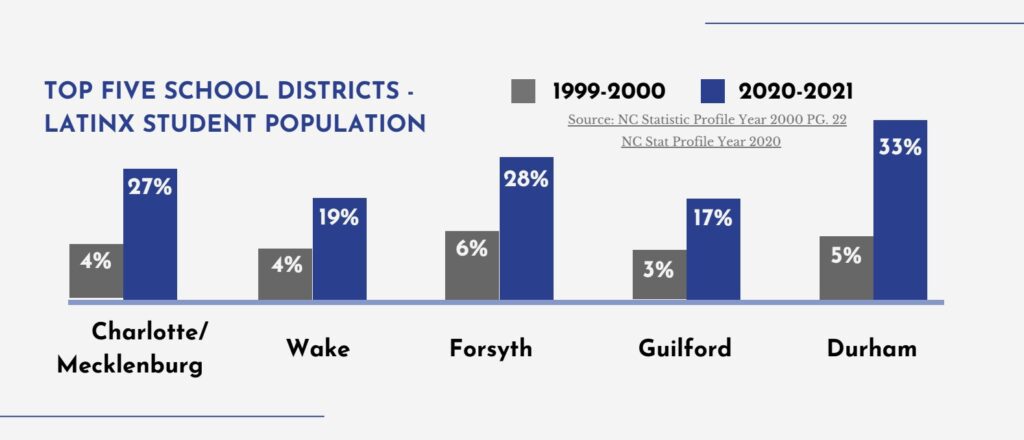

Severe lack of educator diversity in schools
While Latinx students make up nearly 18% of the K-12 student population, only 3% of teachers are Latinx, according to the report.
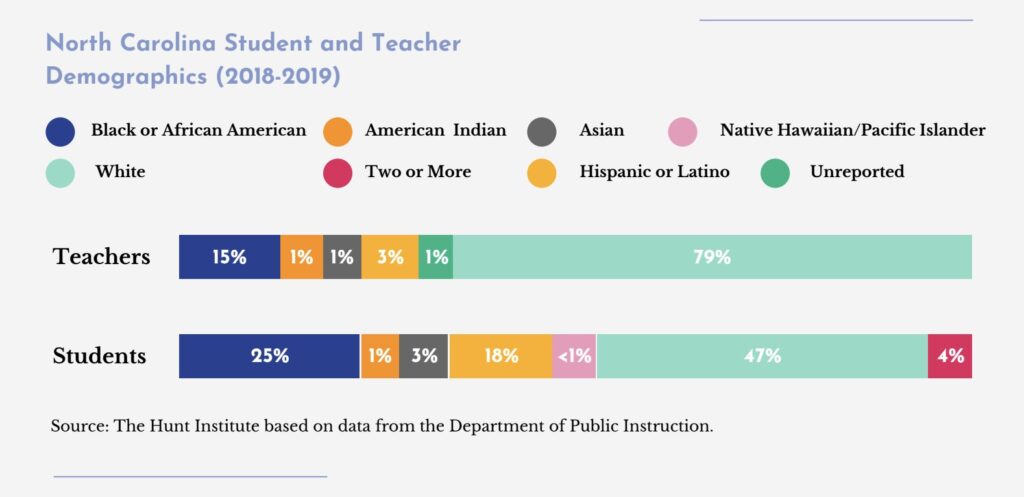

Participants told LatinxEd this lack of representation makes the responsibility of supporting Latinx students fall on a small number of bilingual counselors and educators.
“When we don’t see that support in our schools, then it’s really difficult for our students to see themselves in different positions or see themselves as professionals in the future,” one educator quoted in the report said.
LatinxEd suggests that schools focus on intentionally recruiting Latinx educators, school leaders, paraprofessionals, and administrative staff, and offering professional development opportunities for Latinx educators.
Some already existing resources are the Alamance Scholars Program and the Diverse and Resilient Educators Advised through Mentorship program (DREAM).
Limited opportunities and advising support for postsecondary education
Despite Latinx students making up almost 20% of the population in North Carolina’s public schools, they make up only 8% of UNC system enrollment, and 14% of first-time, full-time N.C. community college enrollment, according to the report.
In every region LatinxEd visited, participants said immigrant families faced unique barriers to postsecondary education:
- Undocumented students and Deferred Action for Childhood Arrivals recipients pay out-of-state tuition for public postsecondary institutions and cannot access North Carolina financial aid resources.
- Mixed-status immigrant families – families whose members include people with different citizenship or immigration statuses – face challenges completing Free Application for the Federal Student Aid (FAFSA) and Residency Determination Service (RDS). Language access is also a barrier to navigating these systems.
- Transportation to and from college is often a problem because undocumented immigrants cannot obtain a driver’s license in North Carolina.
Some changes participants in the tour suggested were intentionally recruiting Latinx students in Advanced Placement, Honors, Career and Technical Education, dual enrollment, and apprenticeship programs, improving the student-to-counselor ratio in public schools, and implementing statewide tuition equity policies.
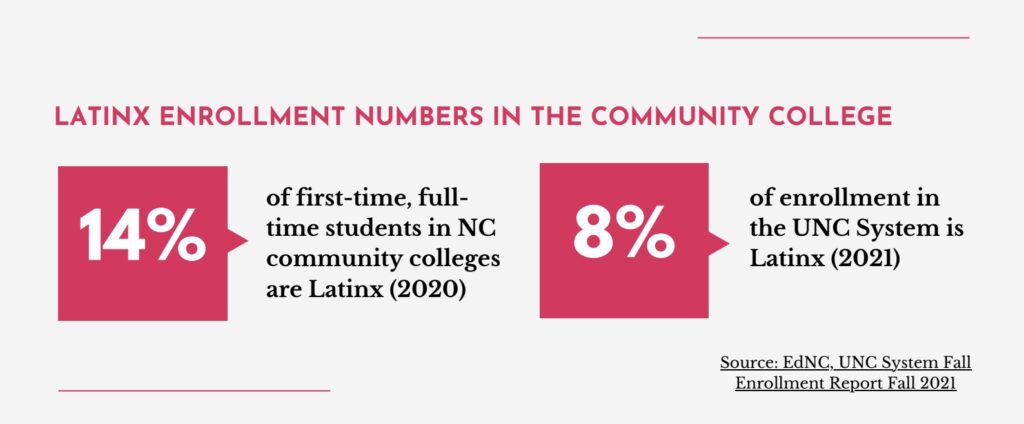

The report culminated in several recommendations for stakeholders, including increasing teacher diversity in public schools and investing in providing postsecondary resources. In terms of state policy, the report recommended investing in greater language access in schools, tuition equity for immigrant students, and drivers’ licenses for immigrants to ease transportation challenges for students.
Overall, the report emphasized all education stakeholders should be actively working to advance educational outcomes for Latinx students in North Carolina.
Ricky Hurtado, co-founder and senior advisor of LatinxEd, said part of the purpose of the report was to break barriers and get the attention of community leaders, policy makers and other people who can make change.
But he said the report served other purposes, too: “To make sure that folks realize that there’s hope on the horizon, that folks are doing this work in 100 counties, that folks are thinking critically about how to serve students and families in a bilingual, bicultural way.”
Read the full report here.
Editor’s Note: The #SomosNC tour was supported by the John M. Belk Endowment, which also supports the work of EdNC.



